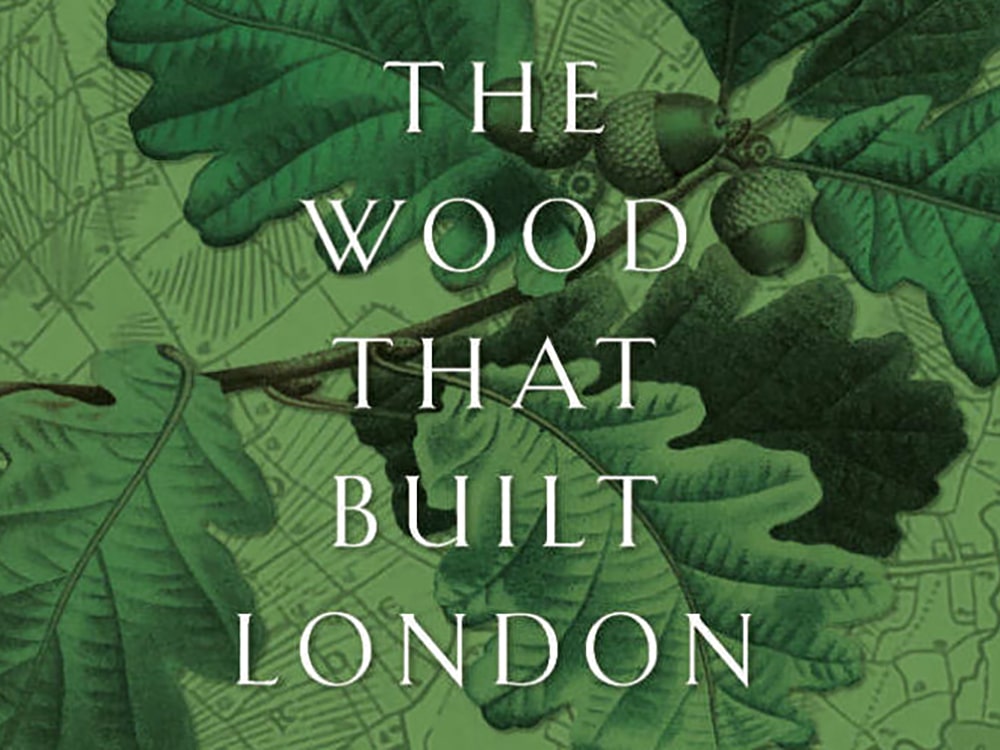Post
BOOK REVIEW | The wood that built London: A Human History of the Great North Wood
21 Aug 2023
By C.J. Shüler / Published by Sandstone Press
Reviewed by Mark Prizeman
A small bit of wood on either side of a disused railway track in South London might seem a strange place to inspire a book that cogently unwraps and explains British social and economic histories by describing the various erosions of the Great North Wood. The passage of gradual encroachment from the Middle Ages to the uncomfortably recent developer ravages and chronicling the continued threats to the surviving woodland can finally illustrate the resulting modern Environmental dilemma in this thoroughly researched and carefully written narrative. As the author says “…bringing the past alive in all its quotidian detail and casual cruelty".
Get priority booking on events - join The London Society
The Great North Wood once covered the range of low hills just South of the Thames and before the wooded North Downs with the important town of Croydon set between. Little pockets of the once extensive Great North Wood; that is, North of Croydon, remain dotted over the ridges and hills of Crystal Palace and Beulah Hill. The Wood once stretched from Norbury across the hills down to the river at Deptford. This is an undulating landscape in London discovered by Londoners trying to find a route free of traffic lights down to Brighton; an opportunity to appreciate the various hinterlands of the sprawled metropolis.
Originally comprised of Ancient woodland and coppices the wood was always owned managed and used in a regular rotation for the resources of timber, firewood, charcoal and useful light timber from coppiced and pollarded trees. Grazing rights allowed the underbrush to regenerate and create the idyll of a man-made woodland. The North Wood was a vital and agriculturally managed sustainable resource.
Felled first-rate timber was first used to build ships which when, later, broken up were recycled as well-seasoned lumber into buildings. Drake’s flagship, The Revenge, built at Deptford from timber felled at the 500-acre Westwood, above Penge would have used around ten acres of oak (HMS Victory used 80 acres of oak). Not being useful for agriculture the hills remained wooded and vital to London and Croydon until coal, imported timber and the factory allowed it to be carved up and eaten by buildings.
The book describes well how the North Wood was of vital economic value to both London and Croydon further to the supply of large section felled lumber by providing a basic source of fuel and the very useful lengths of narrow gauge timber grown from coppiced trees, harvested in a regular cycle, that would be ‘worked green’ and fashioned into the everyday artefacts of the pre-industrial world; furniture, tools, fences and horse-drawn transport. Charcoal production in the woods essential to the local industries of pottery and metalworking was also used for heating houses without using chimneys.
It is from the late twentieth-century rediscovery of the medieval woods of South London that this book takes its cue. The author is involved in the conservation of the woods by various pressure groups such as the London Wildlife Trust and the gradual reclaiming of forgotten tracts for carefully managed public access yet in a contemporary set of values.
Subscribe to our newsletter and find out what's happening at the London Society
The encroachment into the woods has joined London to Croydon in a continuous mat of houses came in stages with gradual overlapping erosions such as the Streatham Spa becoming part of an Unigate Dairy delivering water with milk under bomb damage dealt with the water part of the delivery. Large houses become Council property with the estates being filled with other estates and low-density housing. Many an inhabitant from Norwood to Fort Neath living in this landscape of tight hills and definite valleys will be pleasantly informed about the subtleties of a place that, strangely still remain, even though the tree-scape has become a town-scape.
Though the textural detail of the places described can seem bewildering even to one with a relatively familiar local knowledge, it is that detail that needs access to maps, graphics and a historic delineation, illustrations in the paperback publication are not so clear - but much better in the hardback as the beautiful colour coded tree survey of Sydenham Hill Wood in 1971 is lost to grey tones and the key maps become illegible. That said, the writing is of quality that brief explorations of an old A to Z will keep the distant reader on track.
Volunteers tending the woods are now understanding the complexities of nature; and rather than collecting hedgehog heads for a shilling each and emptying nests of eggs, are embracing nature in an ancient symbolistic way. Counter to the ‘anthropocentric hubris’ this is an environmental re-bonding that favours learning to love insects, vermin, and to cherish weeds.
